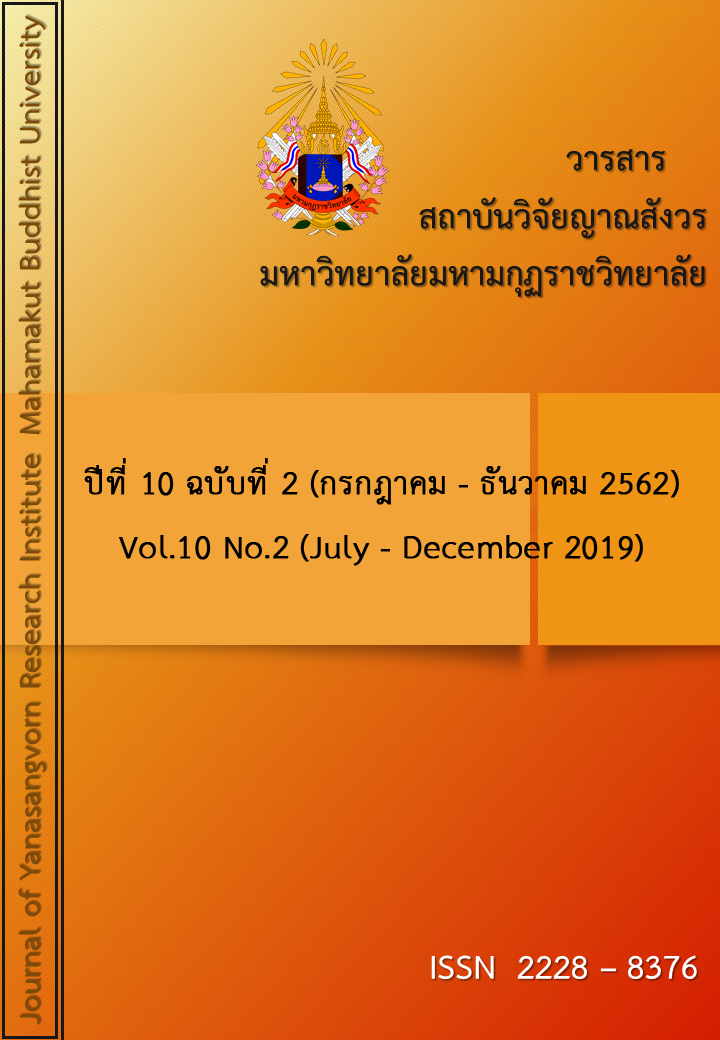LEARNING COMMUNITY DEVELOPMENT BASED ON BRAIN-BASED LEARNING
Main Article Content
Abstract
The objective of this article was to develop a learning community based on brain-based learning. This research focusing on the area of Khao Thong subdistrict community, Payuhakiri district, Nakhon Sawan province. It was a participatory action research consisting of 2 target groups of study. Thus, the main target group was composed of children and youth in Khao Thong Sub-district, aged from birth to 20years old whereas the minor was composed of families, schools and communities. The study findings could be concluded as a process of learning community development as follows: 1. Inputs were the goals of children and youth development in accordance with the principles of brain development focusing on the children and youth divided by age into 3 groups: early childhood, school-age children and adolescents. 2. Mechanisms and processes referred to the cooperation from all three parties: 1) the families including promoting positive family power, children raising and promoting the learning among the children and youth based on brain-based learning, 2) the schools including the development process and design of learning management based on brain-based learning and 3) the communities composed of the community working groups’ planning, supporting, monitoring, lessons concluding and knowledge management. 3. Outputs were the community was developed with every sector giving priority to learning and personal development. Engage in nurture, instruction and monitoring children and youth in the area to be developed according to the brain-based learning. The outputs were the results of the main target group according to each age group, the effects on the schools and the consequences on families, temples and communities.
Article Details
References
ครรชิต พุทธโกษา. (2554). คู่มือการพัฒนาชุมชนแห่งการเรียนรู้ ฉบับสมบูรณ์. Retrieved May 22, 2017, from http://www.kruinter.com/file/29720141006205700%5Bkruinter.com%5D.pdf.
จุฬากรณ์ มาเสถียรวงศ์ และคณะ. (2558). รายงานการศึกษาสภาวการณ์และขับเคลื่อนการพัฒนาคุณภาพชีวิตเด็กและเยาวชนประจำปี 2556-2557. กรุงเทพมหานคร : โรงพิมพ์แห่งจุฬาลงกรณ์มหาวิทยาลัย.
รัตถภรณ์ คำกมล และบุษบา บัวสมบูรณ์. (2559). การศึกษาผลสัมฤทธิ์ด้านการแต่งคำประพันธ์ประเภทกาพย์ยานีของผู้เรียนชั้นประถมศึกษาปีที่ 5 ที่ได้รับการจัดการเรียนรู้ตามแนวสมองเป็นฐาน. วารสารวิชาการ Veridian e-journal มหาวิทยาลัยศิลปากร, ปีที่ 9 (ฉบับที่ 2), 1060-1077. https://www.tci-thaijo.org/index.php/Veridian-E-Journal/article/download/66976/ 54692/+&cd=2&hl=en&ct=clnk&gl=th.
สนอง โลหิตวิเศษ. (2559). ชุมชนแห่งการเรียนรู้. สารานุกรมศึกษาศาสตร์ (Encyclopedia of Education) ฉบับที่ 51 (2559). Retrieved March 18, 2019, from http://ejournals. swu.ac.th/index.php/ ENEDU/article/view/ 7820.
สำนักงานคณะกรรมการวิจัยแห่งชาติ. (ม.ป.ป.). คู่มือการสร้างต้นแบบชุมชนแห่งการเรียนรู้. Retrieved March 18, 2019, from http://www.rpu.ac.th/Library_web/doc/e- book_T/T015.pdf.
สำนักงานบริหารและพัฒนาองค์ความรู้ (องค์การมหาชน). (2558). แนวทางการจัดการเรียนรู้ตามหลักการพัฒนาสมองสำหรับเด็กวัย 3-6 ปี. Retrieved May 4, 2017, from http://www. okmd.or.th/ upload/pdf/BBL_7to12year_book.pdf.
Gardner, H. (1983). Frames of Mind: The Theory of Multiple Intelligences. New York : Basic Books.
Kemmis, S., & McTaggart, R. (2000). Participatory action research. In Denzin, N. & Lincoln, Y. (Eds.). Handbook of qualitative research. Retrieved May 22, 2018, from www.corwin. com/upm-data/21157_Chapter_10.pdf.

